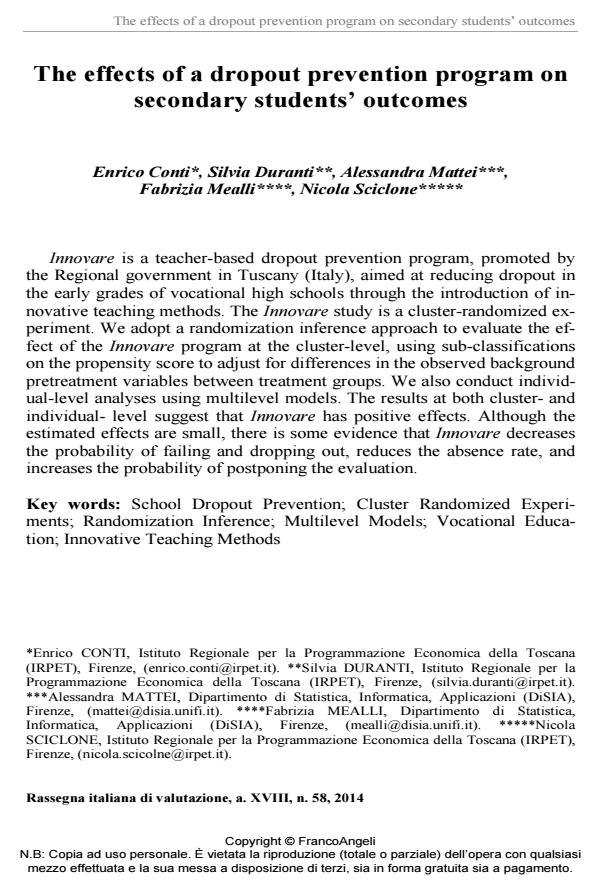The effects of a dropout prevention program on secondary students’ outcomes
Titolo Rivista RIV Rassegna Italiana di Valutazione
Autori/Curatori Enrico Conti, Silvia Duranti, Alessandra Mattei, Fabrizia Mealli, Nicola Sciclone
Anno di pubblicazione 2015 Fascicolo 2014/58
Lingua Inglese Numero pagine 35 P. 15-49 Dimensione file 368 KB
DOI 10.3280/RIV2014-058003
Il DOI è il codice a barre della proprietà intellettuale: per saperne di più
clicca qui
Qui sotto puoi vedere in anteprima la prima pagina di questo articolo.
Se questo articolo ti interessa, lo puoi acquistare (e scaricare in formato pdf) seguendo le facili indicazioni per acquistare il download credit. Acquista Download Credits per scaricare questo Articolo in formato PDF

FrancoAngeli è membro della Publishers International Linking Association, Inc (PILA)associazione indipendente e non profit per facilitare (attraverso i servizi tecnologici implementati da CrossRef.org) l’accesso degli studiosi ai contenuti digitali nelle pubblicazioni professionali e scientifiche
Innovare is a teacher-based dropout prevention program, promoted by the Regional government in Tuscany (Italy), aimed at reducing dropout in the early grades of vocational high schools through the introduction of innovative teaching methods. The Innovare study is a cluster-randomized experiment. We adopt a randomization inference approach to evaluate the effect of the Innovare program at the cluster-level, using sub-classifications on the propensity score to adjust for differences in the observed background pretreatment variables between treatment groups. We also conduct individual- level analyses using multilevel models. The results at both cluster- and individual- level suggest that Innovare has positive effects. Although the estimated effects are small, there is some evidence that Innovare decreases the probability of failing and dropping out, reduces the absence rate, and increases the probability of postponing the evaluation.
Parole chiave:School Dropout Prevention; Cluster Randomized Experiments; Randomization Inference; Multilevel Models; Vocational Education; Innovative Teaching Methods
Enrico Conti, Silvia Duranti, Alessandra Mattei, Fabrizia Mealli, Nicola Sciclone, The effects of a dropout prevention program on secondary students’ outcomes in "RIV Rassegna Italiana di Valutazione" 58/2014, pp 15-49, DOI: 10.3280/RIV2014-058003